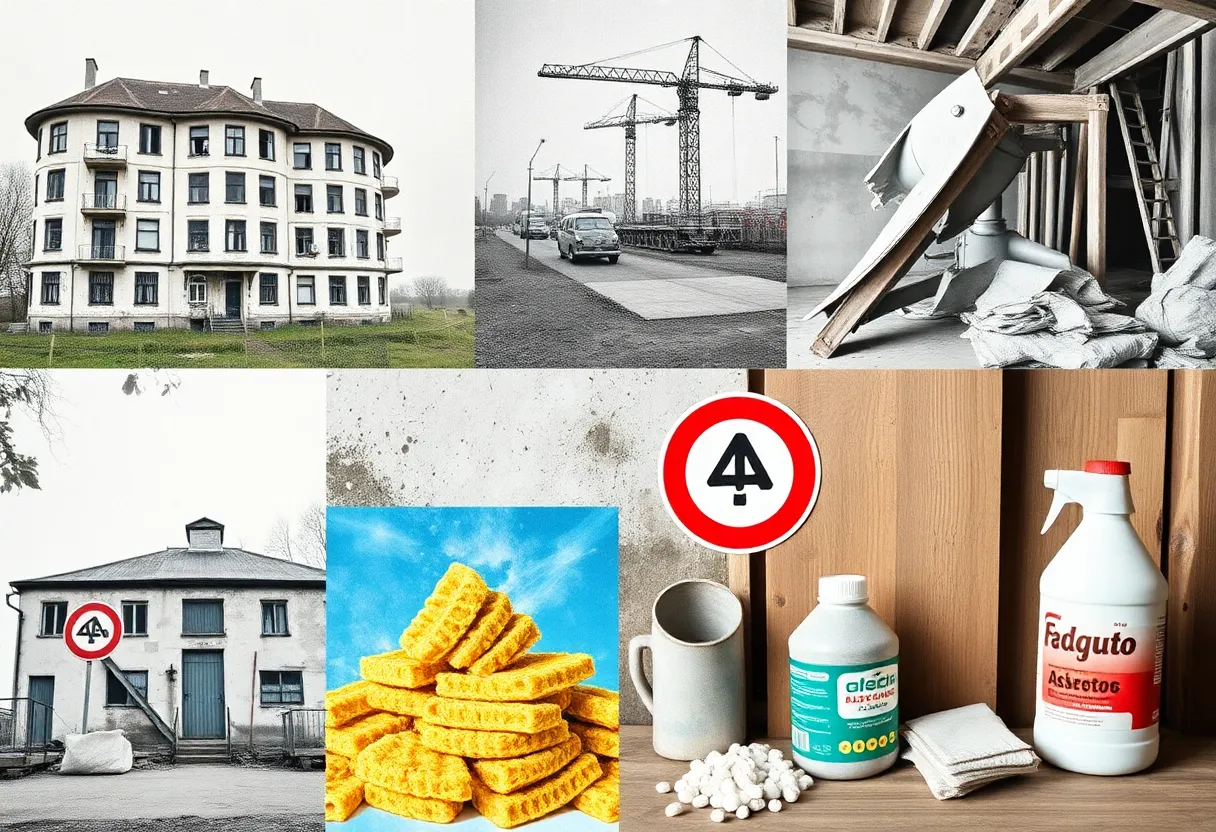News Summary
The debate over chrysotile asbestos continues as the EPA reverses its ban considerations due to industry lobbying. With over 40,000 annual deaths linked to asbestos-related diseases, public health advocates express concerns over the regulatory shifts. As legal battles ensue, the U.S. trails behind more than 50 countries that have opted to ban the substance. This ongoing saga highlights the tension between health advocacy and economic interests.
The Endless Battle Over Asbestos: A New Chapter in the Chrysotile Saga
Asbestos—once hailed for its exceptional fire-resistant properties—has been a major source of health concern, particularly due to its link with mesothelioma, a devastating cancer that attacks the linings of various organs. Despite the ban on nearly all forms of this notorious substance in construction, one variant remains legal: chrysotile asbestos, often referred to as “white asbestos.” The unfolding saga surrounding its regulation reveals an ongoing tug-of-war between public health advocates and industry interests.
A Shifting Landscape of Regulations
Under the Trump administration, there were significant shifts regarding chrysotile asbestos regulations, complicating the already murky waters of environmental policy. The Environmental Protection Agency (EPA) announced plans to revise its earlier decision and reconsider a federal ban on chrysotile asbestos that was intended to go into effect in March 2024. Just as the industry was scrambling to adapt to impending regulations, the reversal has initiated a new round of debate.
In an unexpected move, the EPA declared it would pause litigation and enforcement against chrysotile use for approximately 30 months while it examines whether the ban is overly broad. The proposed phase-out period that was initially set for two years has now been extended to a staggering 12 years, largely due to lobbying efforts from chemical companies.
Public Health in the Balance
The decision to reconsider the chrysotile asbestos ban comes amidst heightened public scrutiny and disapproval of delays in eliminating this dangerous material. Asbestos is linked to various forms of cancer, including ovarian cancer, lung cancer, and laryngeal cancer, contributing to over 40,000 deaths in the U.S. every year. This staggering statistic has prompted health advocates and environmental groups to voice their outrage, arguing that the EPA’s intentions to roll back protections only further endangered public health.
The EPA had previously sought to implement stricter regulations as part of its commitment to chemical safety under the Toxic Substances Control Act of 1976, which laid the groundwork for regulating chemicals but failed to effectuate a comprehensive asbestos ban until 1989. In a regrettable turn of events, this ban was overturned in 1991, and since then, the struggle over asbestos regulation has only intensified.
Industry Lawsuits and Economic Implications
The legal landscape is fraught with challenges as chemical companies have already filed lawsuits contesting the chrysotile asbestos prohibition. These legal battles add another layer of complexity, further delaying decisive action on this contentious issue. Chrysotile is still used in numerous products, notably brake pads, gaskets, and chlorine production; industries reliant on these materials argue that moving forward with a ban without proper alternatives could have dire economic repercussions.
Global Push for a Ban
Interestingly, more than 50 countries around the world have already imposed bans on chrysotile asbestos, showcasing a stark contrast to the regulatory battle taking place in the United States. While the American debate rages over workplace safety and the economic viability of alternatives, these nations have decisively opted to protect public health first and foremost.
The Road Ahead
As the EPA embarks on its 30-month review of the chrysotile asbestos ban, critics are not optimistic. Concerned citizens and advocates argue that the legacy of existing asbestos products continues to pose serious health risks, irrespective of new regulations. Even as discussions about improving workplace safety measures take center stage, the shadow of past legislative failures looms large.
The impending review will undoubtedly spark further debate, as it not only holds implications for public health but also for industrial practices across the nation. As America continues to grapple with the legacy of asbestos, one thing remains clear: The fight to ban chrysotile asbestos is far from over.
Deeper Dive: News & Info About This Topic
HERE Resources
35 Years After the U.S. Asbestos Ban: Americans Still Await Protections
The Ongoing Battle Against Asbestos: Mesothelioma Awareness
Family Seeks Answers After Father’s Death from Mesothelioma
Survival Breakthroughs: New Treatment Shows Promise for Mesothelioma Patients
The Hidden Dangers of Asbestos in Central Asia: A Growing Public Health Concern
Public Health Advocates Rally Against Asbestos Reconsideration
The Paradigm Shift in Mesothelioma Treatment: MARS2 Study Findings
Asbestos Discovery at Loyalist Bonfire Site Sparks Safety Concerns
Bonfire Ignites Controversy over Asbestos Site in Belfast
New Regulations Signal End of Chrysotile Asbestos Use



















